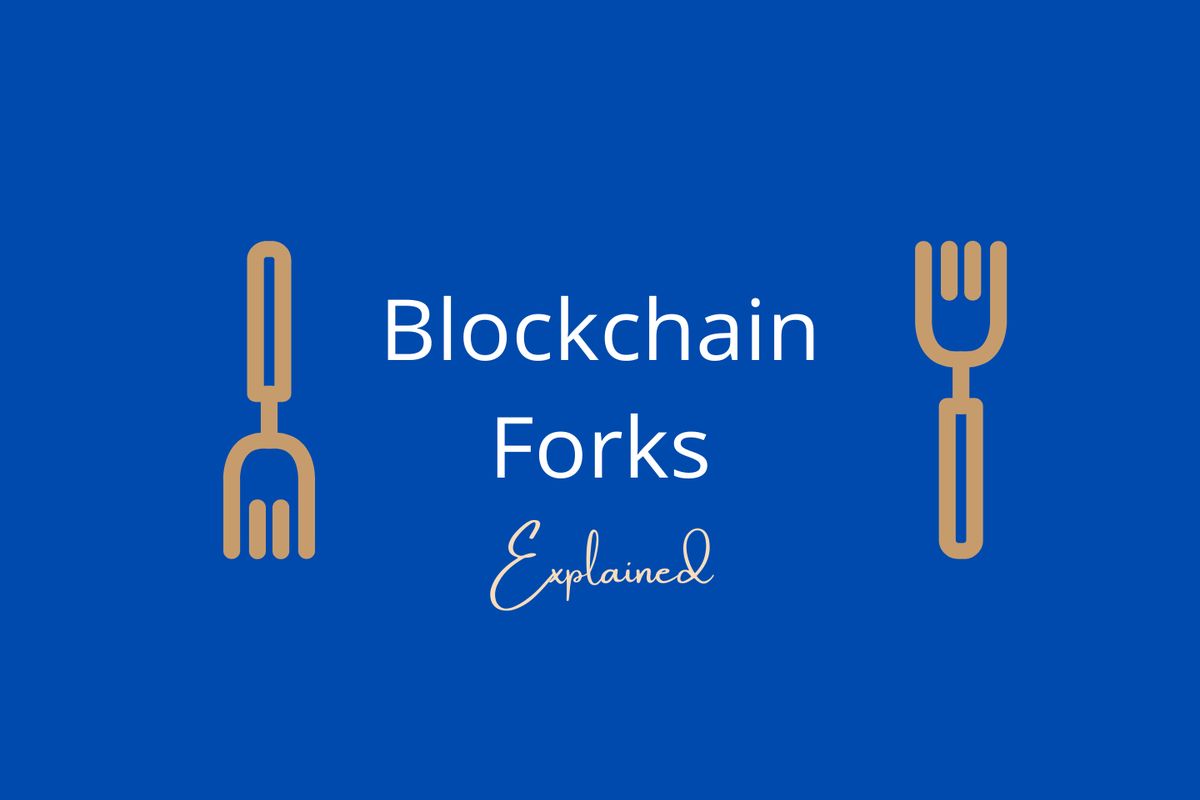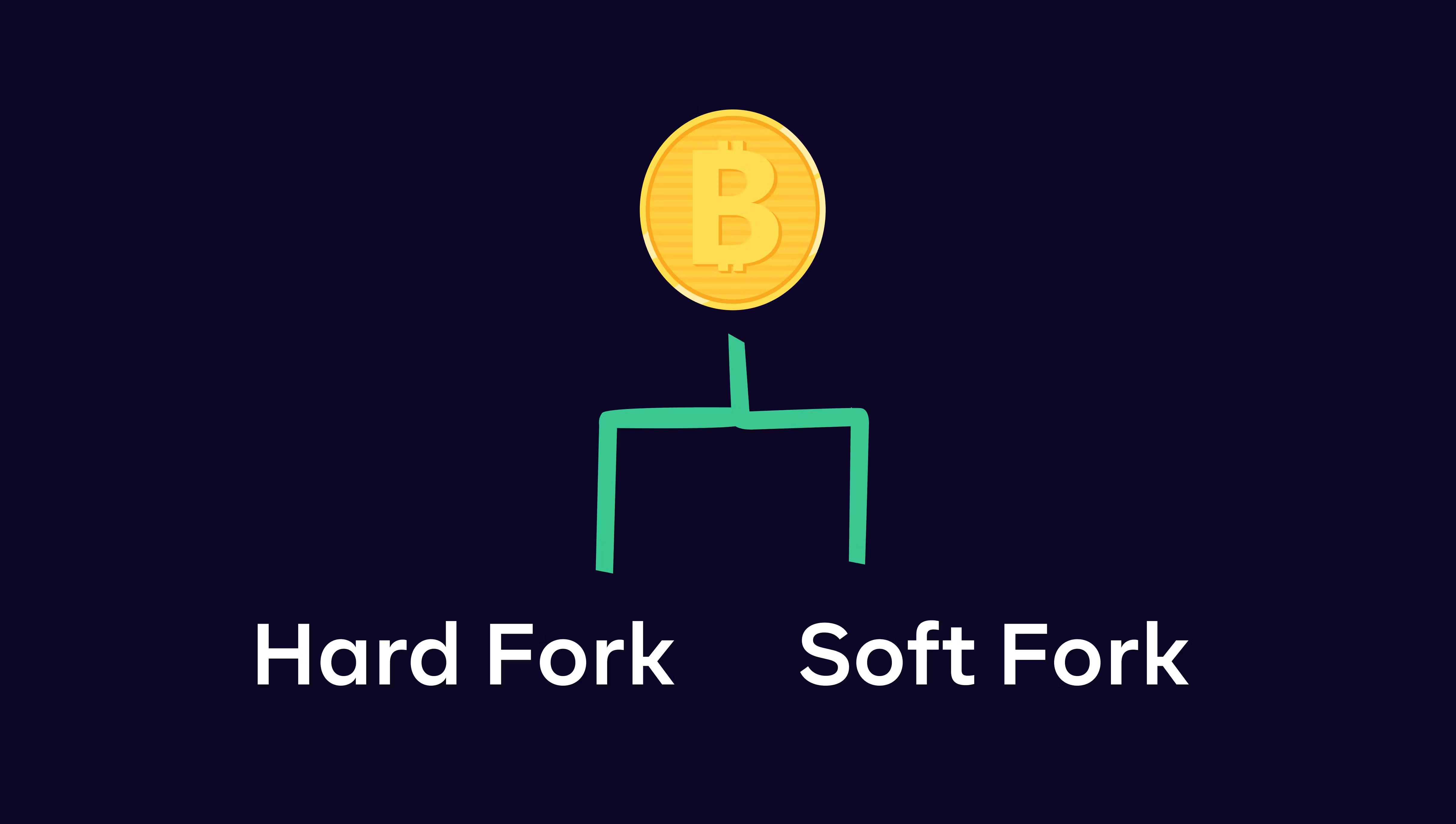Over the years, forks have become a powerful tool mostly used in blockchain development. They assist in solving different challenges suggested by blockchain users.
All systems need an upgrade or change at some point in their development or operations. There is a need to often introduce an extra feature or correct a minor defect in the setup. Many computer software developers fix bugs and normally roll out updated versions of their wares.
In that context, blockchain users may also propose to effect some alterations to a blockchain although the blockchain system is an immutable digital ledger technology (DLT). By description, a fork is a set of actions required to change a blockchain. Two types of forks exist: the hard fork and the soft fork.
Forks Help In Blockchain Evolution
Since 2008, the blockchain network has remained a permanent and immutable ecosystem. Users need to adhere to the tenets of the blockchain and there was no room for complaints. Illegal transactional activities, bug issues, and security loops were unfixable on the network.
Nonetheless, an incredible transformation happened in 2016 when the founder of Ethereum (ETH), Vitalik Buterin, introduced the fork process. He used it to reverse the stolen funds of a project that was launched on the Ethereum blockchain. After that incident, the fork became a powerful tool used in blockchain development.
It helped in solving a variety of challenges affecting blockchain users.
Who Determines A Fork Formation
Since the blockchain is not managed or run by any centralized authority, it becomes the responsibility of the participants on the network to agree on the way forward. In most cases, the participants agree to implement changes that boost the overall efficiency of the blockchain.
Blockchains, nonetheless, consist of various subsets of participants ranging from the miners to full node users and developers. Thus, who has the final say on what changes need to get implemented on the network?
Since every subset contributes differently to the network, some of the participants on the network have more voting powers than others.
For instance, miners, who secure the blockchain network by dedicating computational resources for block authentication, seem to determine the security and popularity of the fork versions. Since miners offer the computational recourses needed to run the network, any fork version that gets the miners’ approval seems to succeed.
Related:Ethereum Clients Release New Software In Wake of Hard Fork Delay
A majority of the open-source blockchains support an overlap of responsibilities and, hence, a shared responsibility on the fork formation process. Other subset roles include developers who create and update the code that functions within the blockchain and the full node users who work as the backbone and auditors of the network, as they validate and maintain the history of the blockchain.
Understanding Soft Forks
A soft fork is a backward-compatible strategy of adding a new set of rules to a blockchain network. It does not force the nodes and miners to upgrade to the current blockchain version. Nevertheless, the blockchain needs many miners and nodes to switch to the upgraded version. The soft fork supports interaction and integrations between the old and new blockchains.
A good example of a soft fork is SegWit (Segregated Witness) of Bitcoin (BTC). This fork was activated in 2017 to resolve transaction malleability and assist in the Bitcoin scale. The participants on the Bitcoin blockchain agreed to resolve some of the trivial challenges of the chain.
Related: BIP 8, BIP 9 or Modern Soft Fork Activation: How Bitcoin Could Upgrade Next
Some of these challenges included inadequate block size and slow transactional speed of the chain. As a solution, they introduced the SegWit to free up some space that may hold up more transactions on the chain. Notably, the new blockchain accepts several transactions within 1MB at a quicker rate, helping in speeding up the transaction authentication process.
Hard Forks Overview
Unlike soft forks, hard forks develop a different blockchain pathway that is parallel to the original blockchain. Here, the upgrade needs all the existing nodes and miners to join the new chain; the fork is notably backward-incompatible. The old and new chains work independently without any form of interaction between them.
Blockchains can implement hard forks to resolve security flaws, add some new trading components and features, change the whole version of the crypto and reverse transactions.
Related: V4 Hard Fork Resolves Wasabi Wallet Vulnerability
After the SegWit soft fork, some of the Bitcoin nodes complained about the inability of the network to accept larger transactions. The developers and nodes set up a separate blockchain known as Bitcoin Cash (BCH).
They designed the Bitcoin Cash network to accept transactions of up to 32MB. Bitcoin Cash successfully sits at 30 in the market capitalization rankings. Developers of Bitcoin Cash hope that traders will eventually abandon the Bitcoin blockchain due to its high transaction fees.
Later, Bitcoin Cash was split into two groups which include Bitcoin Cash SV and Bitcoin Cash ABC. Every fraction of Bitcoin Cash had its different and unique objectives. One part of the fraction aims to maintain the system while the other part plans to increase the size of the blocks from 32 MB to 128 MB. The other Bitcoin hard forks performed include Bitcoin Diamond (BTCD), Bitcoin Gold (BTG), Classic, and Unlimited, among others.
Sometime in 2016, Decentralized Autonomous Organization (DAO) was unleashed on the Ethereum network. The DAO raised more than $150 million from its fundraising activity. After the launch of DAO, hackers stole at least $60 million in Ethereum from investors.
Related:What Is A DAO LLC?
Ethereum developed a new blockchain to help the original owners recover the stolen funds from the hacker’s wallet address. Furthermore, they performed a soft fork to prevent the criminals from transferring the stolen funds from their wallets.
Soft Forks Versus Hard Forks
Any blockchain is at liberty to select its preferred fork. Interestingly, a hard fork is entirely incompatible with the previous blockchain version while a soft fork is compatible with the old version. Hard forks fully alter the blockchain protocol, needing all nodes to upgrade to the new version.
In the meantime, a soft fork just needs an optional upgrade to the current version that is actively operational. Sadly, developers could easily manipulate miners to validate the transactions against the regulations of the blockchain.
A hard fork makes a blockchain highly vulnerable to fund-losing and double-spending incidents. There might be discord in a community in case the hard fork is contentious. A perfectly-planned hard fork can guarantee general adoption. In most cases, a blockchain community can perform several soft forks without any social rift. Nevertheless, most blockchain developers and nodes prefer the hard fork.
Advantages Of Forks For Investors
Multiple benefits come with forks in the blockchain world. They have provided a great strategy for altering the blockchain, an immutable digital ledger technology (DLT). A fork supports the progressive development of a blockchain. Furthermore, the fork lets traders and investors agitate for boosted blockchain performance.
It offers the partway to enhance a blockchain’s storage and speed capabilities. After a successful hard fork is implemented, investors get an equivalent amount of the original crypto in the new currency.
Sadly, the fork process is highly vulnerable to dump attacks from crypto whales and large investors. They can acquire large amounts of the native token before the fork and gain a bigger amount of the fork. As expected, the eventual impact increases the price of the parent cryptocurrency.
These whales then quickly sell off the pre-acquired tokens, which plunges the token’s price. It is a bad and unfair way of benefitting from a fork. Nonetheless, some of the blockchains suspend trading activities before the fork starts.
Recently, Ethereum completed its shift from the proof-of-work mechanism (PoW) to proof-of-stake (PoS). Contrary to PoW, PoS offers a highly secure, less energy-intensive, and enhanced platform for implementing some new scaling solutions.
Related:Op Ed : The Ethereum Merge…Will Crypto Survive?
Notably, traders can now trade at considerably low gas fees. Ethereum suspended all trading activities for several hours before the merging happened. Maybe, Ethereum’s decision was inspired by the flying speculations of a pump in the price of the crypto after the process.
The Takeaway
A major deal of games, software, and systems need prompt upgrades and updates to their operation mode. That routine does not exempt the blockchain network. Forks let the blockchain implement any of the suggested upgrades. Miners, blockchain developers, and nodes can enhance the efficiency and productivity of the blockchain via a fork.
Soft forks and hard forks play integral roles in the maintenance and upgrade of a decentralized network. Notably, forks also assist in tightening the security of a blockchain.











